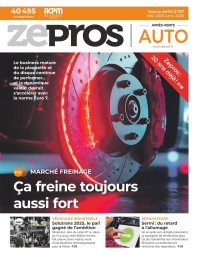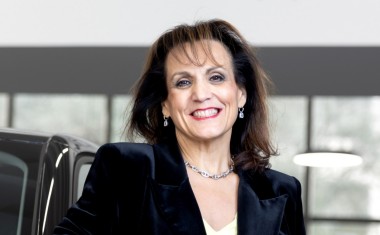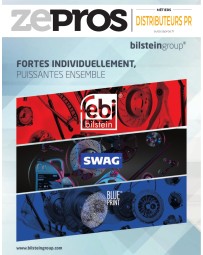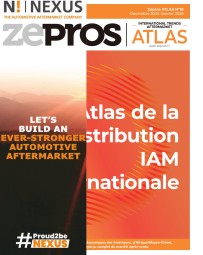
Sylvie Layec, Stellantis : "We believe that the best strategy is multimodal"

Sylvie Layec, Senior Vice-President Parts & Services, global Sales & Marketing, confirms the Stellantis's commitments in Aftermarket, providing insights into those developments.
Last year, you called China an “open-air cluster”. Is that still the case?
Sylvie Layec: The Chinese automotive industry remains remarkably vibrant, fuelled by a rapidly expanding vehicle fleet and a resolute aspiration to become a global leader by 2030, all while adapting to rapidly evolving business models. At Stellantis, our guiding principle has always been based around sustainable development and growth, evident in our acquisition of UAP Auto Union in 2018. Moreover, we have implemented our “Asset Light” strategy in the country through our collaborative venture with Leapmotor.
In this favourable context, we are delighted to announce the continued expansion of our Eurorepar Car Service (ERCS) network. At the end of November 2024, the network has surpassed the milestone of 1,330 sites in China, demonstrating a remarkable growth rate of 7% compared to the same period in 2023.
Furthermore, I believe it’s crucial to emphasise the remarkable global evolution of our ERCS network. In 2024, we expanded our network by more than 400 centres compared to the previous year, bringing the total number of workshops to over 6,600, spread across thirty countries. This geographical expansion has not only enhanced the network’s overall performance but has also enriched our comprehensive 360-degree offering, which is now complemented by new product families and new multi-brand applications.
We must absolutely offer competitive mobility solutions that are perfectly tailored to meet customer needs.
Which areas of the world have been particularly active for Stellantis?
SL: Beyond our two primary regions, let me delve into the dynamics of the group in all the regions under the Third Engine*. For instance, in South America, the acquisition of Norauto in Argentina and subsequently DPaschoal in Brazil has facilitated double-digit growth, showcasing the effectiveness of our strategy in this crucial market.
The Africa and Middle East region also shines in terms of performance, despite the unfortunate geopolitical tensions that impact certain areas. Emerging markets like Ethiopia, Kenya, and others have been integrated into our expansion strategies, alongside the offensive led by Asian manufacturers, particularly Chinese, South Korean, and Japanese, but also North American. However, it’s worth noting that the Asian offensive has generally neglected the after-sales aspect, except for Japanese manufacturers. Chinese manufacturers, in particular, are turning to independent repair networks to form partnerships. At Stellantis, we firmly believe that the most effective strategy lies in adopting a multimodal approach. Therefore, our ERCS network encompasses the repair of all light vehicles and all brands.
Furthermore, through our Leapmotor International joint venture, we will provide our customers with an additional selection of reasonably priced electric vehicles. We will rely on the robustness of our global after-sales networks to ensure the quality of our services.
What is your assessment one year after the implementation of Category Managers?
SL: This project is a resounding success because it fully meets customer expectations and market requirements. It enhances our responsiveness and consistent management of our product ranges. As a reminder, our CATMAN teams create customised offers tailored to various customer types, including parts, services, and solutions.
The initial phase of this project, which encompassed not only Europe but also the global market, concluded successfully, and we are now in the process of deploying this organisation to other regions, commencing with North America in the first half of 2025.
Regarding adjustments, we are carefully analysing the feedback we’ve received from the field. Our unwavering objective remains unchanged: “think globally and act locally”. At the global level, our responsibility is to collaborate closely with the regions to define the strategy and establish the rules that govern the customer journey, ensuring that the customer promise is upheld. At the regional level, our primary role involves refining pricing policies and adapting offers to meet the unique local specificities and requirements.
What are the priority challenges of global after-sales service in your opinion?
SL: The primary challenge, and not the least, is economic. We must absolutely offer competitive mobility solutions that are perfectly tailored to customer needs. To achieve this, it is crucial to optimise the value chain by minimising costs, from production to maintenance. However, this objective is hindered by an unstable geopolitical environment that can have substantial repercussions on the prices of certain raw materials.
The second significant challenge we face is recruiting talent. We are in a genuine crisis of attractiveness throughout the entire organisation, which requires immediate regulation to ensure the long-term sustainability and effectiveness of our activities.
The third challenge, of course, is the digital transition of processes, particularly through the integration of technologies like the Software Defined Vehicle. This also entails ensuring the repairability of vehicles in workshops, with technicians adequately equipped and trained in the latest tools.
Finally, it is crucial to highlight the significance of citizen awareness regarding climate issues. The recent natural disasters around the globe, such as floods and droughts, serve as urgent alarm signals. The environmental transition is an absolute priority, and decarbonised mobility stands as one of its fundamental pillars.
*South America, Middle East, Africa, China & India and Asia Pacific.








